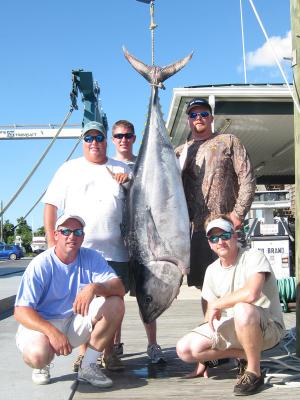There’s something special about deep-sea fishing
Very little has changed on the fishing front, and that is a good thing. The bay is full of panfish including croaker, kings and spot. The same is true for the Lewes and Rehoboth Canal and the Broadkill River.
Flounder fishing in the bay has been slower than we would like with most of the flatfish taken from hard structure at the reef sites. The Old Grounds, 13 miles from Indian River Inlet, has seen some good flounder activity with keepers taken on squid, strips of fresh fish and Gulp!.
The Inner and Outer walls hold tog, triggerfish and spadefish plus a few trout and rock. Sand fleas or crab are the best baits for the tog, triggers and spades while jigs sweetened with Gulp! will attract both rock and trout.
Slot rockfish have been caught from the Lewes and Rehoboth Canal and the Broadkill River. The Savannah Road and Kings Highway bridges have been productive as well as the marsh-lined banks. The best bite will be early or late in the day. Live eels or small spot along with surface plugs and jigs will all work on the rockfish.
The inlet holds a variety of species including triggerfish, sheepshead, rock and trout all taken on sand fleas drifted in the rocks. Flounder have been caught there and in the back bays on live spot.
The tuna bite has been red hot and ice cold. On the good days, limits of yellowfins and bluefins have been taken. Chunking is beginning to take hold on the inshore lumps while trolling is the most popular technique in the canyons.
Going deep
There is something special about being 60 to 70 miles offshore in the Gulf Stream where the water is a majestic blue and the fish are very large. It has been my privilege to catch pretty much every inshore species found in or near Delaware, and from my perspective none can compare to the tail-walking white marlin, the deep-diving tuna or the thrill of a blue marlin in the baits. Even the smaller fish such as dolphin and wahoo are more exciting than even the largest croaker or spot. My beloved rockfish don’t hold a candle to anything that swims in the canyons, and even big blues are nothing more than baitfish for tuna.
Offshore fishing is not for everyone. If you have even the slightest tendency to become seasick, do not consider spending 12 to 14 hours on a boat. A man of my advanced years may want to consider if he has the stamina to fight a bigeye tuna or a blue marlin. At 71, I restrict my cranking to dolphin, white marlin and small tuna. I would like to catch a blue marlin if the situation arises where I can hook a 150-pounder.
Those who would like to try offshore fishing from their own boat have a lot to learn. My brother-in-law Paul Coffin purchased a 22-foot Mako in 1972 and we began fishing the canyons in 1973. At 31 years of age we thought we knew it all. Boy, were we wrong.
On one of our first trips, we were covered up with white marlin. There was a huge school all around the boat and they would hit a ballyhoo as soon as it hit the water. We went through every bait on the boat without hooking a marlin beyond the first jump.
Back at the dock we were relating our tale of woe to a charter captain who asked if our hooks were sharp. Of course they were; they were brand new out of the box. He carefully explained to the two dummies that new hooks had to be sharpened to a triangle edge to penetrate the mouth of a billfish. I don’t believe that is much of a problem with today’s circle hooks.
While modern electronics are a far cry from the compass and flasher depth sounder we had on the Mako, they are not foolproof, so some knowledge of navigation is required. Should the GPS go south while you are 70 miles out on a hazy day someone on board better know how to get home.
One of our biggest problems was fuel. Gas tanks in the 1970s were never large enough to get out and back from the canyons. We ended up with a second fuel tank in place of the cooler in front of the center console.
It is important to calculate how much fuel you will need to run 170 miles and troll for eight to 12 hours. Then add at least another third to the total to compensate for bad weather.
There is so much more to learn about offshore fishing with most of it on a trial-and-error basis. I suggest a trip on a charter boat to learn more, including whether or not you really want to take your boat offshore.

























































